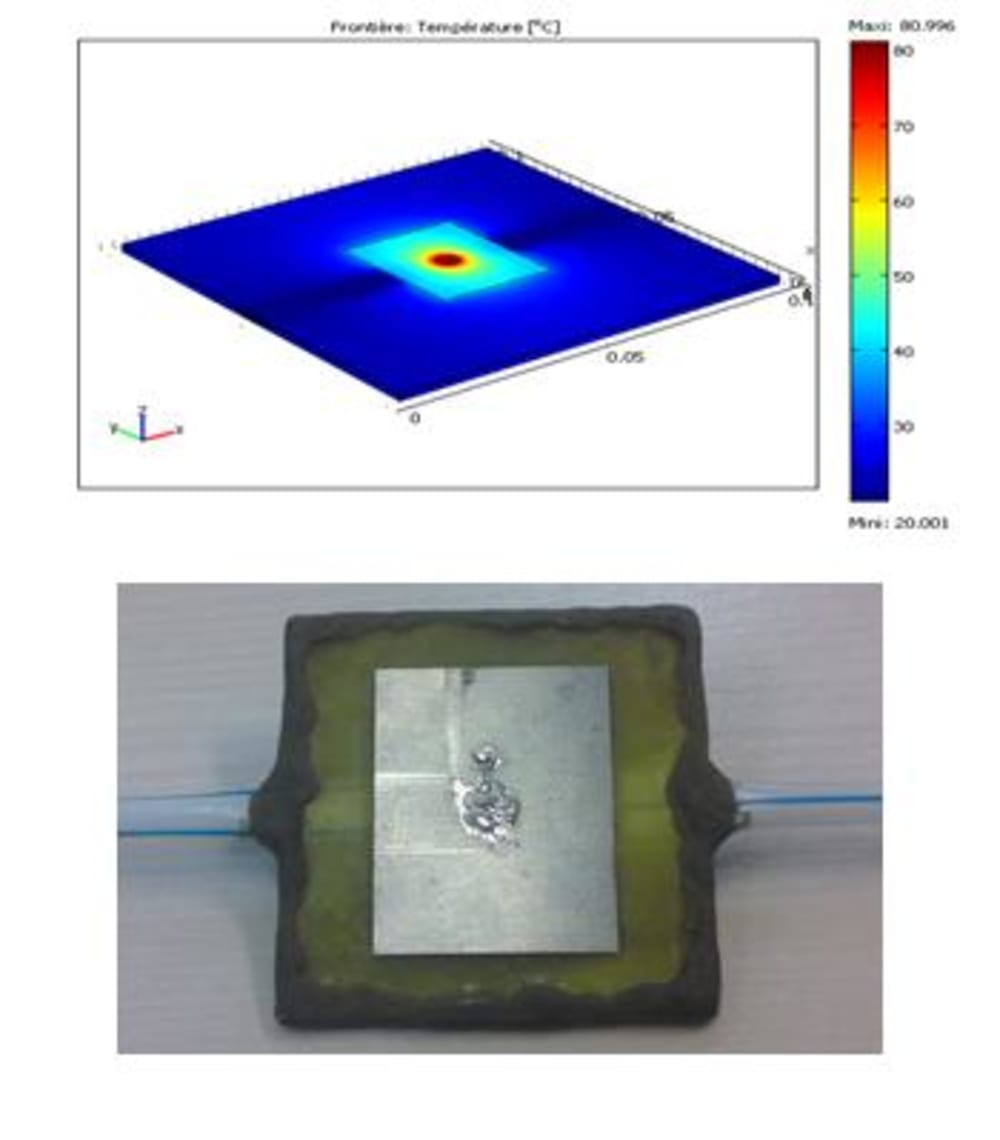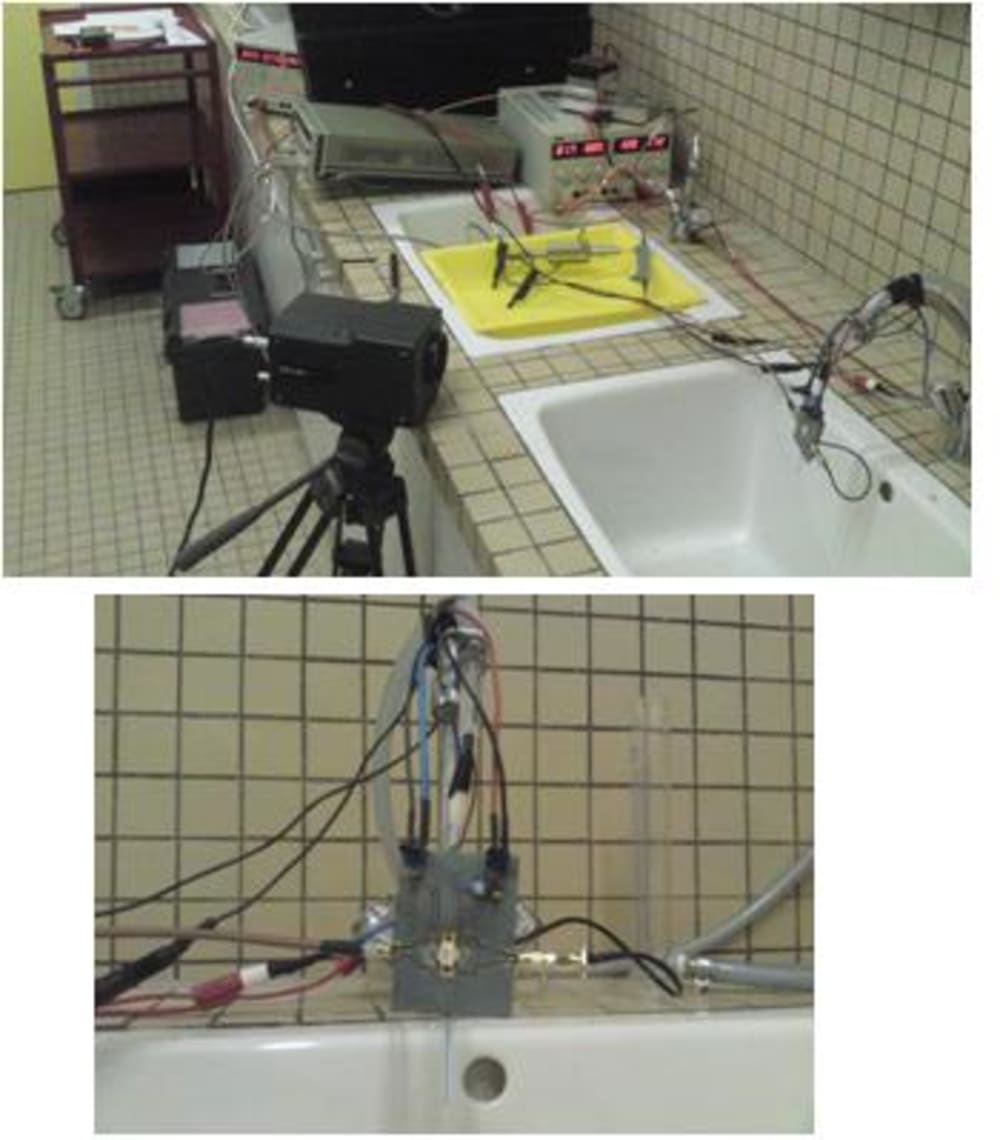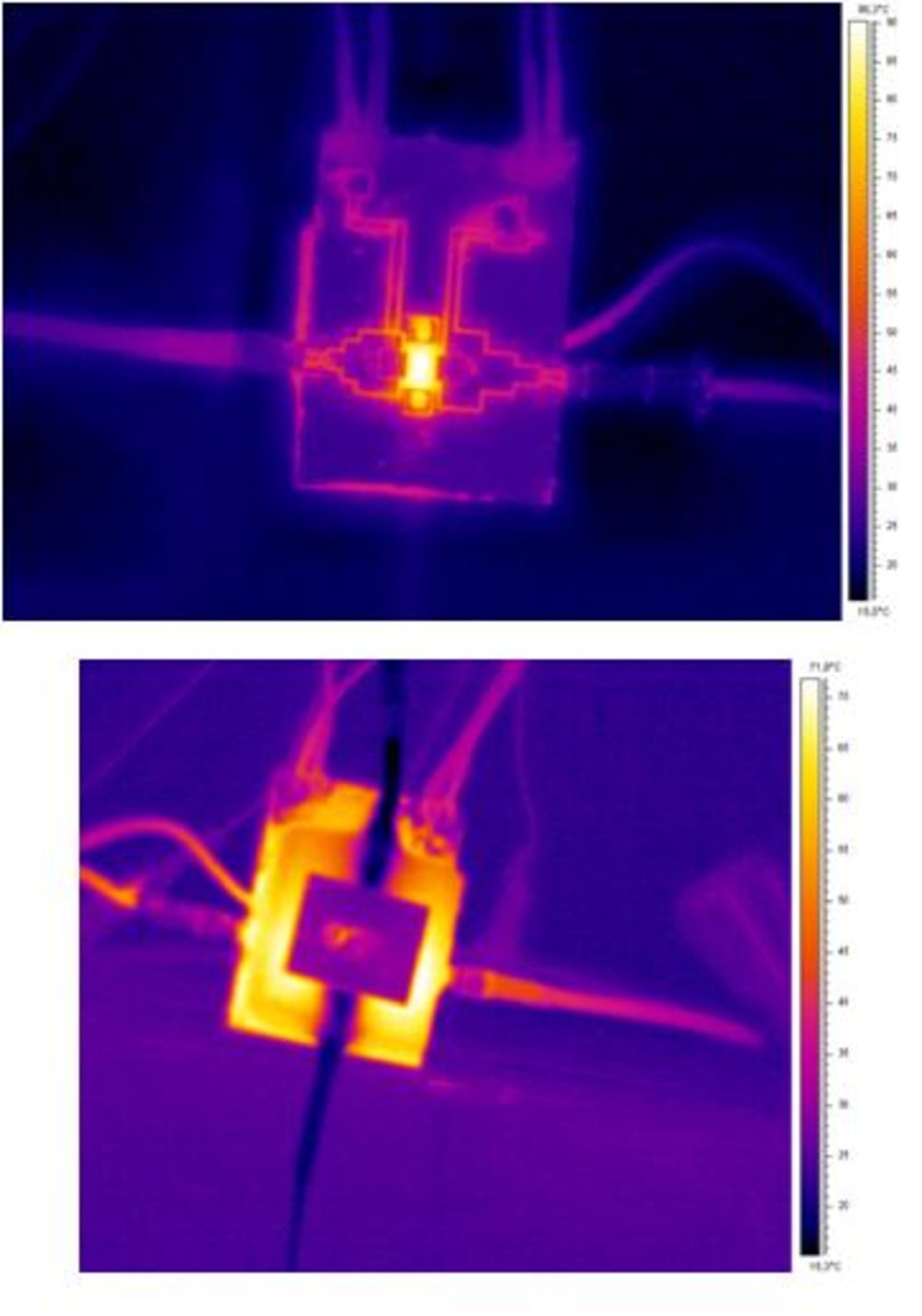Radio frequency front ends must be miniaturized to create high data bit rate terminals and provide numerous accesses to multimedia services. Generally, thermal management plays an essential role in design of Microwave and RF devices.
The objective is to develop an antenna achieving electromagnetic and thermal functions by offering a suitable radiating pattern for transmission as a high efficiency for removing the power dissipated by promoting heat exchange with the surrounding medium.
Use of dielectric fluid flow by micro channel is especially considered for cooling.
The temperature distribution of the structure presented in first figure. The temperature of the distilled water is taken as 20°C. The thermal power removed through microstip heatsink antenna cooled by distilled water is 7.4 Watt for maximum temperature of 80°C at the level of the power component. The thermal power removed as high as 0.73 Watt per centimeter square of antenna, while it is 0.28 for the antenna without channel.
After performing all the necessary measurements to the fabricated microstrip heatsink antenna cooled with fluid alone and the fabricated power amplifier alone. Then this antenna is connected via metallic cylinder “heat spreader” to the ground plane of a power amplifier circuit.
A power amplifier based on transistor MOSFETs (MRF21010LR1) was fabricated. The bias point as defined in datasheet (Vdd=28 V and Idq=100 mA) for output power of 10W and its Power Added effeciency PAE is about 50%. Thus we have 10 W as a dissipated thermal power.
The fabricated transmitter (antenna, power amplifier) then measured by infrared imaging system to confirm simulations. The measurement setup consists of power generator to feed the input of the power amplifier, power meter to measure the input power, the tested transmitter and the infrared imaging system.
Different water flows are used: 2, 1 and 0.6 ml/s. Figure 9 presents the temperature distribution of the power amplifier side (a) and the antenna side (b) for thermal dissipated power more than 10W and water flux of 0.6 ml/s. The ambient temperature is 20°C.
The maximum temperature at the transistor side is close to 80 °C and the maximum temperature at the antenna side is close to 70 °C. This means that the The thermal power removed through microstrip heatsink antenna cooled with water is about 10 Watt for maximum temperature of 80°C at the level of the power component.
This result is better than that obtained in simulation. Since the water temperature used in measurements is about 15°C while the water temperature used in simulation was 20°C. The measured thermal power removed as high as 1 Watt per centimeter square of antenna.
No major influences on the electromagnetic performances of the antenna are consequently observed by the presence of different heatsinks, while a higher thermal efficiency is observed to remove thermal dissipated power by promoting heat exchange with the surrounding medium. The thermal powers as Watt per centimeter square of antennas are 0.28 and 1 removed through the microstrip heatsink antenna alone and the microstrip heatsink antenna by distilled water.
Like this entry?
-
About the Entrant
- Name:Atef Alnukari
- Type of entry:individual
- Hardware used for this entry:Camera IR, Power generator, Power Meter,Software used for this entry:COMSOL, HFSS
- Patent status:none








